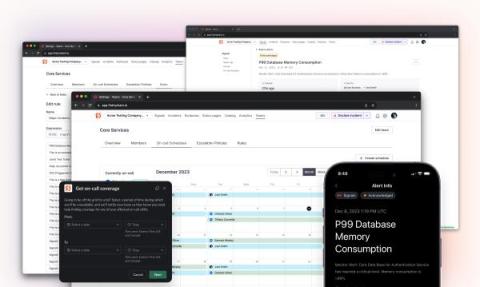Operations | Monitoring | ITSM | DevOps | Cloud
Incident Management
The latest News and Information on Incident Management, On-Call, Incident Response and related technologies.
What is Mean Time to Detect (MTTD) - and why does it matter for ITOps?
Have you ever wondered about your IT team’s efficiency in detecting incidents? Your Mean Time to Detect (MTTD) is an incident management Key Performance Indicator (KPI) that reveals your productivity during the first stage of incident resolution and enables investigation into opportunities for improvement. ITOps and DevOps teams that can lower their MTTD can more quickly identify issues, minimize potential downtime, and maintain system reliability too.
Understanding IT event analytics: From basics to AIOps
A wise person once said, “What’s measured is what matters.” This couldn’t be more true than in the high-stakes world of IT operations, where the ability to swiftly measure, analyze, and respond to events is crucial for improving IT operational performance. This blog delves into defining IT event analytics, guiding you on getting started, showcasing real-world examples, and introducing essential methods to transforming your incident response strategy.
Where Intention Meets Sweet Innovation.
ilert ChatOps: Check on-call status on Microsoft Teams
Demo Roundup! From Alert to ServiceNow with the PagerDuty Operations Cloud
Comparing Uptime Monitoring, Heartbeat Monitoring, and Synthetic Monitoring
Incident tracking: How it works and why it matters for IT operations
Constantly juggling IT incidents can be exhausting as you try to track and resolve them before they escalate into disruptions. With each incident demanding prompt and precise attention, keeping up takes significant work. However, you can manage these challenges more efficiently and with less stress and less risk by optimizing your incident-tracking process.
Fault Tolerance: What It Is & How To Build It
Now in beta: alerting for modern DevOps teams
Although FireHydrant has spent five years focused on what happens after your team (erg, I mean service 🙄) gets paged, the topic of alerting often comes up in discussions with our community. People are tired of paying big bucks for software that’s expensive, bloated, and hasn’t seen much innovation. Clearly, there’s a problem here – and we’re tackling it head on.










